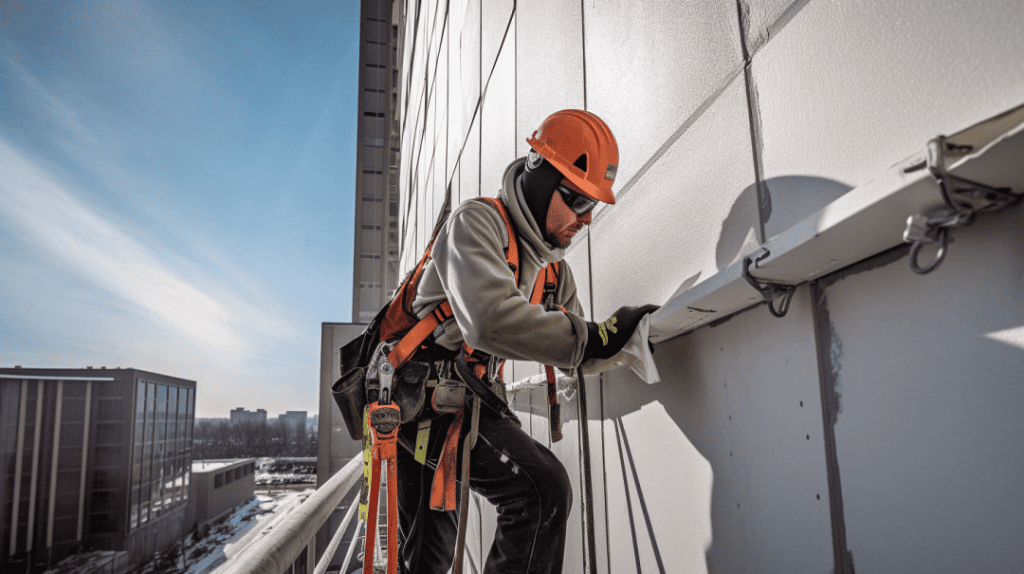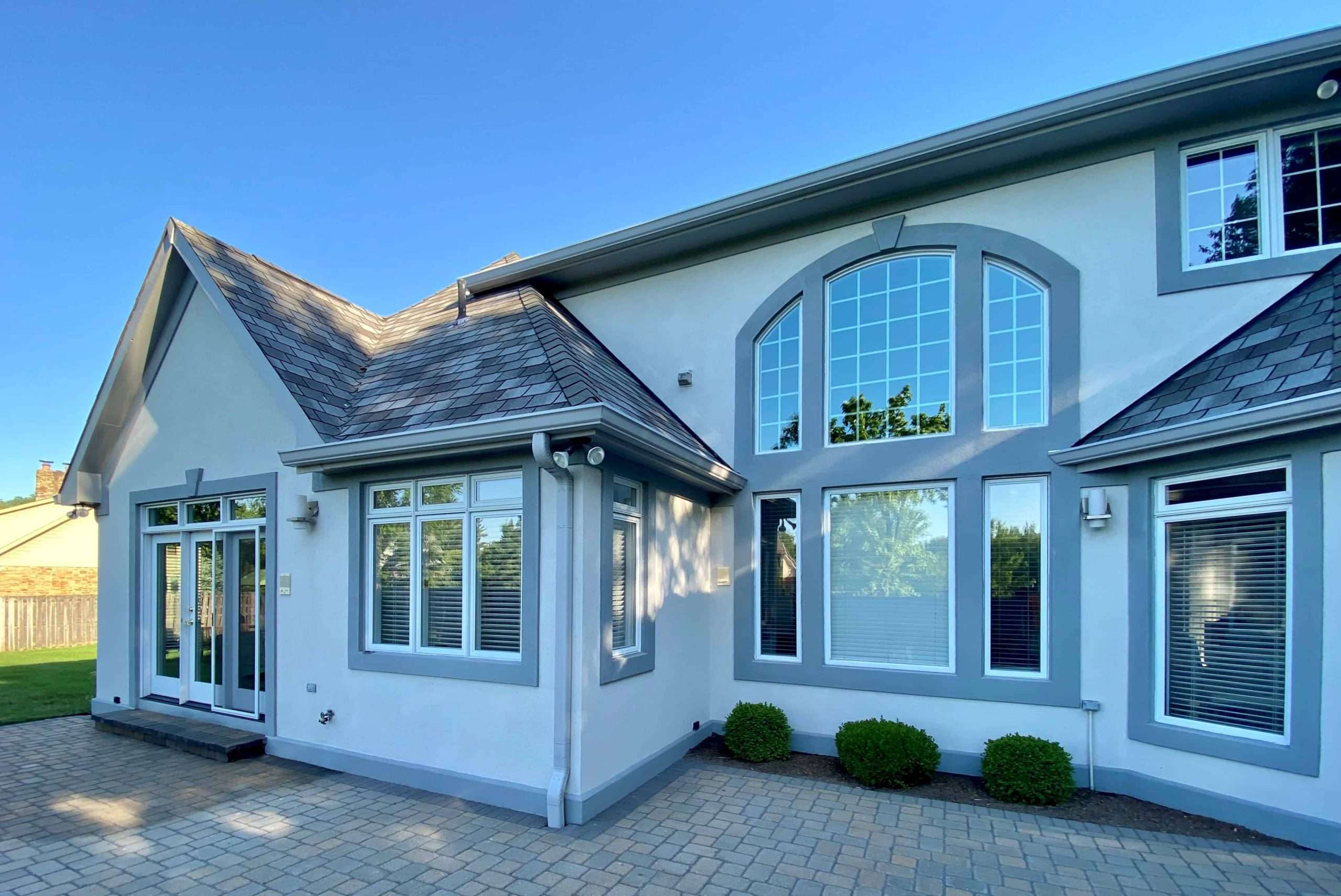Maximizing Durability: Your Guide to Flashing EIFS Stucco Effectively
Proper flashing installation is imperative for exterior insulation and finish systems (EIFS) in order to prevent moisture damage and ensure the longevity of these specialized stucco wall assemblies. Often referred to as synthetic stucco, EIFS cladding consists of rigid foam insulation boards, glass fiber reinforced base coat layers, and textured acrylic finish coat. EIFS provides aesthetics, efficiency, and design flexibility. However, it is vulnerable to water intrusion issues without comprehensive flashing. This guide covers flashing best practices for EIFS based on expert recommendations to deliver lasting protection from rot, leaks, and costly repairs.
Why Effective Flashing is Vital for EIFS Walls
Flashing provides a weather barrier at roof-wall intersections, windows, doors, material transitions, and other vulnerable areas. Flashings on EIFS walls create a path to divert water away from openings and direct it downwards. Without proper flashings, moisture can penetrate behind the cladding leading to decay, mold formation, delamination, and structural deterioration over time. Building codes and EIFS manufacturer warranties mandate correct flashing installation. Investing in meticulous flashing work protects your EIFS investment and prevents expensive repairs later on.
Key Areas Requiring Flashing on EIFS Cladding
Several important junctures on EIFS-coated walls need effective flashing installed:
Roof-Wall Intersections
It is especially important to flash roof and wall intersections on EIFS buildings. Step flashing should be installed in a shingle fashion up the EIFS wall at the proper overlap as specified by the manufacturer, typically 2 inches minimum. Kickout flashing is also vital where roof eaves extend outward from walls to redirect water runoff away from the cladding.
All Openings in EIFS Walls
Windows, doors, vents, lighting fixtures, outlets, hose bibs, dryer vents, and any other openings in the EIFS envelope must be correctly flashed to prevent moisture issues. The flashing should be continuous and extend at least 8 inches past the opening on all sides. It must also integrate properly with the EIFS base coat while still allowing drainage. Careful flashing provides protection against water entering the wall cavity.
Transitions Between Materials
The intersection where EIFS cladding abuts other exterior materials such as wood, stucco, masonry, stone, vinyl, or metal panels requires flashing to accommodate expansion and contraction. Backer rods and joint sealants are also often used along with flashing at these transitions between dissimilar claddings.
Wall Penetrations
Any objects penetrating the EIFS finish, like pipes, wires, bolts, signage, light fixtures, handrails, etc. must be adequately sealed and flashed to prevent water from sneaking in around them into the wall assembly.
Horizontal Surfaces
Horizontal planes that tie into EIFS walls, such as porch roofs, soffits, overhangs, and entryways need properly shingled flashings that integrate with the EIFS drainage plane.
Bottom Termination Edge
The lower termination edge of the EIFS cladding should incorporate a drip edge flashing to direct water drips away from the wall surface while still allowing proper drainage.
Decorative Grooves and Reveals
Any decorative grooves, joints, or reveals in the EIFS finish should also be flashed and sealed to avoid moisture entry through these intentionally weakened areas.
Selecting Durable, Compatible Flashing Materials
Common EIFS flashing materials include sheet metal or flexible vinyl. Galvanized steel, copper, and aluminum are frequently employed metals. Stainless steel is the most durable but comes at a higher cost. In all cases, the flashing material must resist corrosion and be compatible with EIFS chemical components. Consult your EIFS manufacturer for recommended specific flashing products. Where possible, select flashing metals that match adjacent roofing, trim, or panels. Vinyl flashings provide simplicity but a shorter lifespan. Take care when transporting and storing flashings to prevent creasing damage.
Step-by-Step Installation Best Practices

Correctly installing flashings on EIFS requires proper training and attention to detail. Here are professional flashing installation recommendations:
- Ensure the substrate is properly prepared and ready for flashing attachment. Flashings go over the weather barrier.
- Take precise measurements and cut flashings to optimal dimensions needed for each unique application.
- Minimum recommended flashing width is 6-8 inches; height varies by location. Account for required overlap.
- Attach flashings neatly in straight lines parallel to the substrate using recommended corrosion-resistant fasteners into solid backing.
- Overlap adjoining horizontal flashing sections by at least 2 inches minimum. Overlap vertical adjoining sections by at least 4 inches.
- Install flashings in continuous one-piece units without piecing small sections together. Make proper folds at corners.
- Seal all joints, seams, and fastener heads meticulously with flexible, EIFS manufacturer-recommended sealant.
- Extend flashings past all openings and intersections by at least 6-8 inches minimum.
- Embed flashing edges fully into the EIFS base coat to ensure proper downward drainage slope.
- Closely inspect installed flashings and make any needed corrections before applying the exterior cladding finish.
- Coordinate closely with other trades like roofers and carpenters to integrate flashings properly.
Specialized skills and training are required to correctly flash EIFS systems. Hire experienced EIFS contractors rather than tackle flashing as a DIY project.
Inspecting and Maintaining Existing EIFS Flashings
Periodically inspect the condition of flashings on installed EIFS walls and make any needed repairs immediately to prevent moisture issues. Potential warning signs include:
- Visible cracks, holes, perforations, creases, or deterioration in the flashing material.
- Gaps, lifting, bending, or loose areas where flashings meet the wall.
- Staining, efflorescence, mold, mildew, or rust indicate moisture problems.
- Cracked, missing, inferior sealant around penetrations through the EIFS.
Left unaddressed, any deficiencies in EIFS flashings can lead to much larger problems. Replacing damaged flashings promptly is wise to prevent extensive repairs later on.
Like any building envelope system, EIFS flashings need regular inspection and maintenance. Recommendations include:
- Reapply quality sealant around openings and penetrations every 2-3 years, inspecting annually.
- Check for cracks or gaps in window, door, or skylight caulking that allow water intrusion. Recaulk as needed.
- Replace any flashings that become warped, creased, punctured, perforated, or exhibit rusting.
- Keep overlapped shingled flashing areas clear of accumulated debris and vegetation.
- Clean accumulated dirt and grime from flashings periodically using mild detergent and water. Avoid harsh chemicals.
Common EIFS Flashing Errors to Avoid
Flashing mistakes can completely undermine the water resistance of EIFS-clad buildings. Watch out for these potential pitfalls:
- Inadequate overlap where adjoining flashing sections meet.
- Lack of proper drip edge, kick out, or step flashings at critical roof-wall junctures.
- Poor adhesion between flashings and EIFS base coat allowing water migration.
- Flashing terminating short of openings, edges, and intersections instead of required 6-8 inches.
- Using unapproved, inferior flashing materials not recommended by EIFS manufacturer.
- Sealing seams or penetrations with non-compatible caulk or sealants.
- Failing to install proper backer rods at material transitions before applying flashing.
Meticulous attention to detail and strict adherence to best practices is key to durable, effective flashing installation on EIFS projects. Follow manufacturer instructions closely and don’t cut corners. For existing EIFS walls, properly maintaining flashings is equally vital. With proper moisture control methods, EIFS cladding can provide exceptional performance and beauty for decades.
Summary of Key EIFS Flashing Tips
- Install code-compliant flashing at all roof lines, openings, edges, and transitions on EIFS walls.
- Select durable, corrosion-resistant flashing materials that integrate well with the EIFS components.
- The minimum recommended flashing width is 6-8 inches. Overlap adjoining sections at least 2-4 inches.
- Fully embed flashing edges into the EIFS base coat to promote outward drainage.
- Extend flashings at least 6-8 inches past all openings, intersections, and terminations.
- Seal seams meticulously with flexible, EIFS manufacturer-approved sealants.
- Inspect existing EIFS flashings regularly and repair deterioration immediately.
- Maintain sealants around penetrations through the EIFS envelope.
- Have experienced EIFS contractors install or replace flashings. DIY flashing is not advisable.
Following flashing best practices helps safeguard your investment in beautiful, efficient EIFS-clad buildings. Proper moisture control techniques will keep your EIFS walls looking pristine and prevent costly repairs for decades to come.


